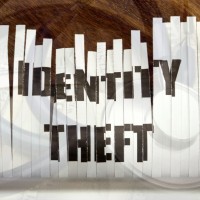Credit Report Errors Can Ding Your Wallet and Life! What to Do
- Details
- Written by Remar Sutton
- Category: Articles

Errors in the information on your credit reports can hurt your financial and personal life. Errors can lower your credit score, resulting in paying higher interest rates on car loans, mortgages, and credit cards or in being turned down for a loan. Insurance companies and employers often use information based on your credit report to make decisions; erroneous information on your credit report could mean paying more for insurance or being turned down for a job. Checking your credit report regularly using www.annualcreditreport.com can help you correct errors in a timely manner.
Consistently reviewing your credit reports and correcting any errors may seem like a time-consuming task.
The Chances Are Good That You May Have Errors on Your Credit Reports
In a large study in 2012, the Federal Trade Commission (FTC) reported that about 25 percent of consumers had at least one error on at least one credit report that could affect their credit score. At least one in twenty consumers (5 percent) had a significant error that was likely to have a negative impact on their creditworthiness. Five percent doesn't sound like a lot, but it represents about 10 to 11 million Americans. In 2014, research by Consumers Union detailed a number of common errors that negatively affected individuals. Since the Consumer Financial Protection Bureau (CFPB) assumed oversight of credit reporting agencies (CRAs) from the FTC, complaints about errors on credit reports and the response of CRAs have remained among the top complaints received. Among all complaints in all areas, the companies with the most complaints made to the CFPB have remained the big three CRAs—Experian, Equifax, and TransUnion.
What Type of Errors Should You Look For?
The CFPB provides a checklist that you can use to review your credit report from each major CRA. Following are some common areas where errors occur. The recommended strategy is annually to check your credit report from each of the big three CRAs—Experian, Equifax, and TransUnion. The only site to get your federally mandated free credit report is www.annualcreditreport.com. You can keep an ongoing check throughout the year by requesting your annual report from a different CRA at four-month intervals. (Example: January—Experian; May—Equifax; September—TransUnion; January—Experian; and so on.)
Here are some common areas to review carefully.
Personal Information
- Your name. Is it spelled correctly? Does it have the correct middle initial?
- Your birthday. Are the month, day and year correct?
- Social Security number.
- Present and previous addresses. Are they all correct?
- Present and previous employment. Are all the facts correct, such as name and address of company and years of employment?
Information about all your accounts
Is the information about all credit, utility and rental accounts correct? Are the balances and credit limits reported correctly?
Are there any accounts that you did not open or that are not yours? Such erroneous accounts could be a sign of identity theft or a sign that another person's data has been mixed with yours (called a "mixed file").
Are any accounts that you have closed reported as "open"? Or are any reports you have open reported as "closed"?
Is the payment status on all amounts correct? In particular, double check any accounts that are marked "delinquent."
Carefully check any information reported from collection agencies. Is the undischarged debt yours? If you have paid it off, is the payoff correctly recorded?
Has any incorrect information that you have disputed and that has been corrected shown back up on your credit report after it was corrected?
Is any negative information that should have been cleared from your credit report still on it? For example, a bad debt (other than bankruptcy) that is older than 7 years should be cleared from your account. However, when a delinquent account is sold from one collection agency to another, the new company may report the debt as new. This act is illegal but happens regularly.
Information that comes from public records
Although such information may not be used in calculating your credit score, it may be used in background reports that employers use to check prospective hires, landlords use to check prospective tenants or by insurers to calculate risk and rates. For an example of the problems that can arise from having another person's court record mixed with yours see the personal experience of Bobby Allyn, a reporter for NPR member station WHYY, Philadelphia. (To see the post you may have to sign up for free/guest access to the Washington Post.)
What to Do to Correct Errors on Your Credit Report
To correct errors on your credit report you must formally dispute the information with the CRA that provided that credit report. If the error appears on more than one CRA's credit report, you must dispute it with each.
Many experts such as the National Consumer Law Center (NCLC), Consumer Union and even the CFPB recommend using mail to provide the strongest documentation.
You may file your dispute by mail, online, or phone. To improve your ability to make your case whichever method you use, the big three CRAs now allow you to attach supporting documents that help you prove your case. Many experts such as the National Consumer Law Center (NCLC), Consumer Union and even the CFPB recommend using mail to provide the strongest documentation. Here's the basic process. For detailed help see the resources under "For More Information."
Review your credit report from each CRA regularly. Use the CFPB checklist to note specific mistakes.
Collect the data and records that support your facts about the error. Make copies of these records to send in support of your dispute; never send originals.
Tip: Credit reporting agencies depend on other entities, called "furnishers" (such as car financing companies, financial institutions, mortgage servicers, and utilities) to provide information. Often the mistake originates with the furnishers. Since the CRAs usually just send the disputed information back to the furnisher to check, often by automated code, many errors are simply confirmed, not corrected. To avoid this problem, you may need to contact the furnisher directly and provide that information in your claim.
Submit your dispute to the CRA. Include your complete name, address, telephone number, report confirmation number (if available) and the name of the creditor or furnisher of the information and its account number if there is one. Include copies of the relevant part of your credit report and any materials supporting your claim of error. State the facts in your cover letter or the online form.
Keep copies of all communications (yours and theirs).
If you send your dispute claim by mail, send it by certified mail with a return receipt requested. That way you have a record the CRA received your dispute letter and supporting documents.
Stay alert for the CRAs response. The law requires that the CRA investigate your dispute in a timely manner, usually 30 days; but there are exceptions and loopholes so it may take longer. The CRA must reply to your dispute in a written response. If your dispute is confirmed and the information is to be corrected, check your credit report later to be sure the correction has been made.
If your dispute is not resolved to your satisfaction, you may file a complaint with the Consumer Financial Protection Bureau. The CFPB will assign you a case number and follow up on your complaint.
Still no satisfaction? You have the right to sue the CRA.
Staying Vigilant Can Protect Your Credit
Consistently reviewing your credit reports and correcting any errors may seem like a time-consuming task. However, taking a few hours every few months to stay on top of this issue can save you and your family years of hardship caused by incorrect information on your credit report.
For More Information
- CFPB: Credit Report Review Checklist
- CFPB: What Are Errors That Show Up in Credit Reports?
- Consumer Union: ERRORS AND GOTCHAS: How Credit Report Errors and Unreliable Credit Scores Hurt Consumers by Maureen Mahoney, Public Policy Fellow, April 9, 2014.
- Federal Trade Commission: Disputing Errors on Credit Reports
- National Consumer Law Center: Disputing Errors in a Credit Report














